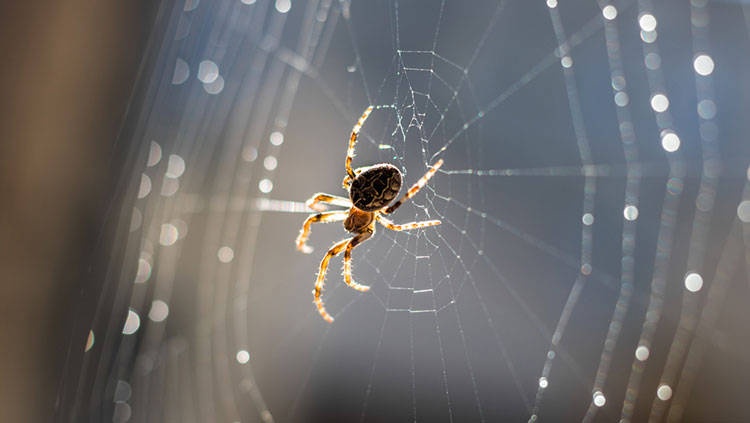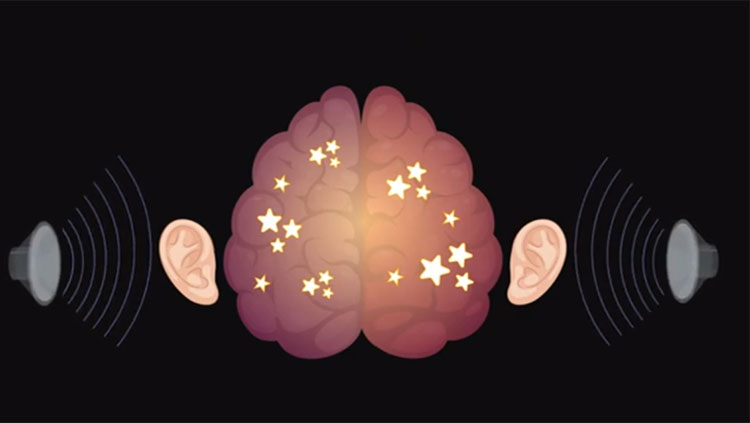Spiders Use Their Webs to Hear
- Published25 Apr 2022
- Author Calli McMurray
- Source BrainFacts/SfN

Scientists have uncovered a new spidey sense: spiders use their webs as an antenna to enhance their hearing. We’ve known spiders can detect vibrations in their web — that’s how they find prey caught in the corner. But a new study published in PNAS reveals that vibration detection applies to sounds, too.
Researchers at Binghamton University and Cornell University caught wild orb-weaving spiders (your typical garden-variety spider) and let them weave webs in small wooden frames. In a sound- and echo-proof room, the researchers played sounds from speakers near the spider but not touching the web. They videotaped the spider to monitor how it responded to each sound. “That’s the key to this experiment,” said Ronald Hoy, a professor emeritus of neurobiology and behavior at Cornell University and one of the senior scientists of the study. An earlier version of the experiment recorded electrical activity from sensory neurons in the spider’s leg. But reviewers said that was not enough to conclude the spider could hear the sound vibrations. “It could just have incredibly sensitive vibration detectors, and everybody knows that spiders can detect vibration,” Hoy said. “The ultimate test of hearing is a response.”
And the spiders did indeed respond. When a loud sound played, the spiders crouched, stretched out their body, or raised their front legs. The spiders could find the source of the sound, too: they turned their bodies toward the speaker’s direction (shown in the video below).
Most vertebrates — and even some invertebrates, like crickets and grasshoppers — hear using an eardrum. An eardrum is a very thin membrane that detects sound by moving back and forth in response to the pressure of sound waves. An eardrum works well for most animals, but for small animals like fruit flies or spiders, there’s not enough space for one. Spider web silk is so thin it behaves just like the air particles around it. Spiders detect the movement of the web, and thus the air, via receptors on their legs. “What the spider has done is take the individual, perfect microphonic properties of a single strand of silk and turn that into an extended eardrum,” Hoy said. Their “eardrum” is fully customizable: spiders can tune their hearing by adjusting the web and can position their eight legs to hear in all directions.
CONTENT PROVIDED BY
BrainFacts/SfN
References
Also In Hearing
Trending
Popular articles on BrainFacts.org


















